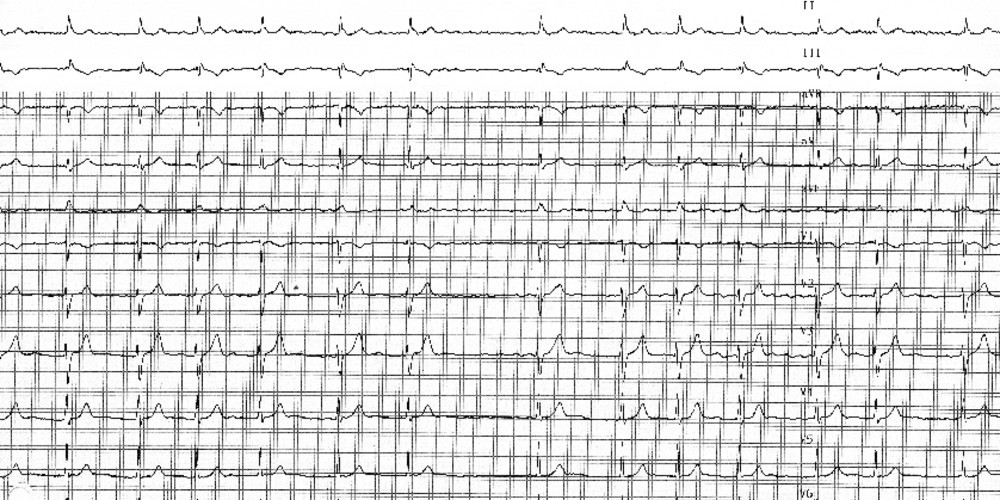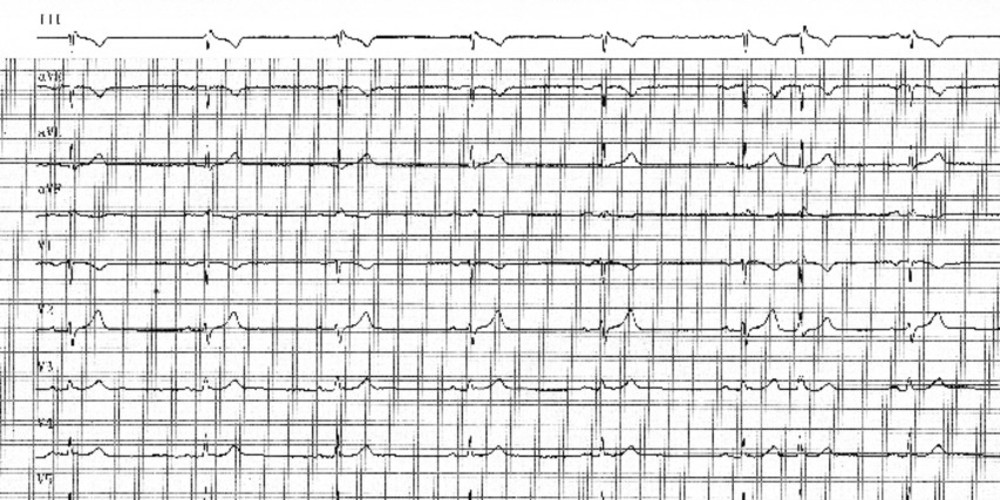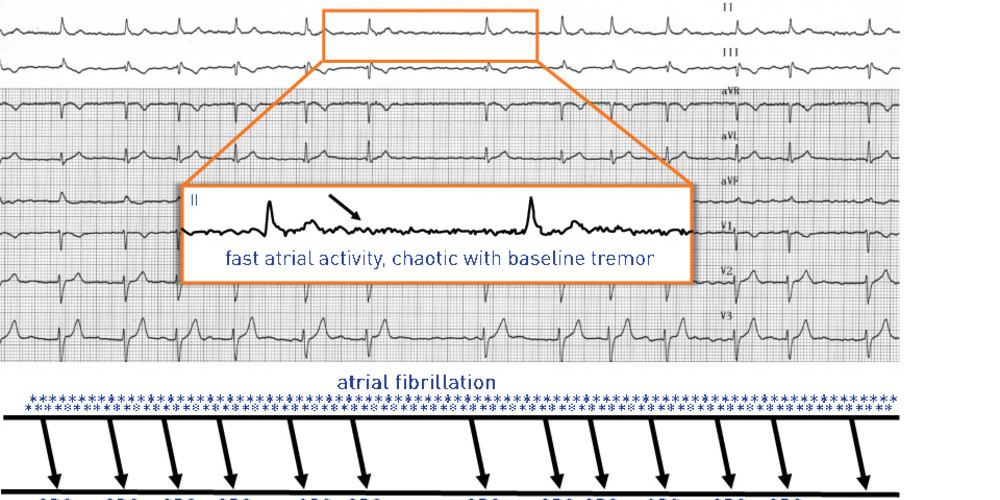Atrial fibrillation
Tracé
N° 0
Library
Pathology
Patient
65-year-old male with no prior history; consultation for palpitations occurring since a few days;


Exergue
During atrial fibrillation, the electrocardiogram typically shows rapid, irregular and disorganized atrial activity along with narrow, rapid and irregular QRS complexes.
Autres articles qui pourraient vous intéresser








Atrial fibrillation is the most commonly observed rhythm disorder in daily cardiology practice and corresponds to a complete disorganization of the electrical activity of the atria leading to the loss of atrial systole.
During an atrial fibrillation episode, the electrocardiogram typically shows: 1) a rapid, disorganized and irregular atrial activity (between 350 and 600 bpm); the atrial waves are difficult to analyze and produce continuous and permanent undulations of the baseline; 2) the QRS complexes are mostly narrow, irregular (justifying the name of complete arrhythmia by atrial fibrillation) with an increased rate > 100 bpm but much...